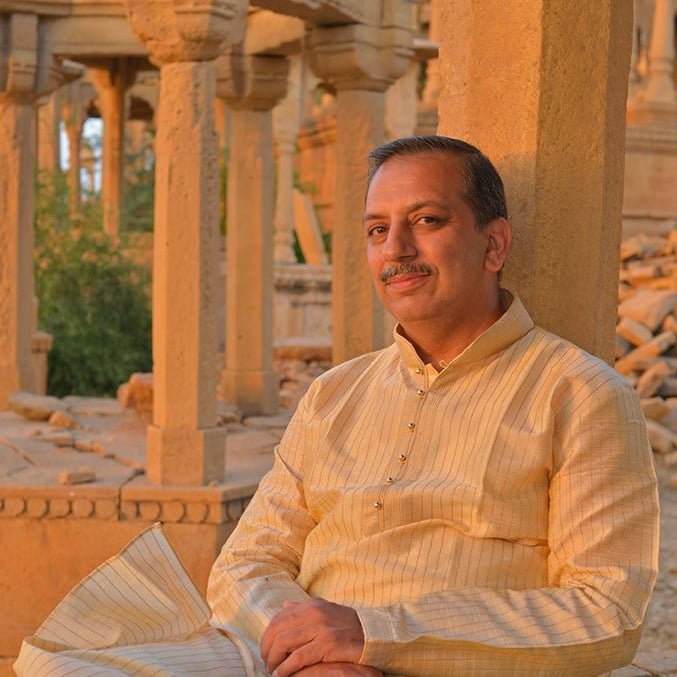
Night Sky Photographer
It has been more than 25 years that I have been photographing the night skies. I do remember the first instance. Although I have lost the slide, but I still remember it vividly. I had gone to a place called Nebsarai on the outskirts of Delhi. I had exposed an entire film that night in 1987. The slide film had 36 frames, but just a couple of frames had stars visible in them. The shop where I got the film developed had almost thrown the film in the bin, because he did not find the film exposed at all! There was, but one frame, which was loaded with stars, Omega Centauri cluster was clearly visible! I was really happy. That was my impetus, my drive to continue astrophotography till now. Over a period of time I developed a warm relation with astrophotography. As the results got better, I wanted to do more and more astrophotography.
To this day, the excitement has not reduced at all. I still get the thrills while planning my photographs which combine celestial and terrestrial objects. A few days back I was at Agra for shooting crescent Moon and Venus behind the Taj Mahal. To capture such an image you have to shoot from a distant location about 3.5 km away from Taj Mahal. Taj Mahal had to be clearly visible from the selected location, with no intervening cables and ugly towers. A lot of prior planning is required for such shots. A lot of scouting is also required for such shoots. I reached the location well in time and scouted several villages for the perfect location. I must say people in the villages are very helpful unlike the cities. The result makes all the effort worthwhile.
I would describe my work as TWAN style! A couple of years back I was invited to become a member of ‘The World At Night’ from India. TWAN members specialise in, what is called – Earth & Sky photography. This is a style where you photograph celestial bodies along with famous monuments, natural wonders, famous places etc. About 30 TWAN photographers are spread all over the world, and shoot stunning night landscapes. A genre of astrophotography which lay people relate to, and understand at a glance. My TWAN gallery is at www.twanight.org/talwar
I also love to make time lapse movies of the sky and celestial movements at night. These days the wonderful digital SLR camera can be automated easily to shoot sequences of images, even for the entire night.
For astrophotography, patience is required in abundance! In the film days it would take exposures is several minutes to complete one frame. In one night the entire film of 36 frames would not even be complete, so you were forced to go out again a week or month later. Finally the film would be complete and then you would go and get it developed. So you would get to see the fruits about a month later! And what if you had made a mistake. Digital cameras changed this drastically. You could preview your images instantly and make corrections immediately for your mistakes, and come back home with at least a few good shots. Even now with the digital cameras, patience is still required in abundance, as you are photographing, sometimes all night. People who accompany us get quite bugged and ask “How much longer will you be?” Us astrophotographers really like to photograph alone, or in similar group of people. When we share our final results with other people, no one know how much of patience and hours/days/months have gone behind each photograph.
I have a long way to go. India has a lot of heritage and natural wondrous locations to be shot under the night sky. My work will probably never ever be finished, even in India. I find satisfaction in my work, immense satisfaction. My present mission is to take up a citi and make a small movie, all at night under the stars. I wish to take up Agra or Shimla as a start.
I conduct the Sky Photo Trip – Astrophotography Workshop at a small village – Majkhali in the Himalayas. The last workshop was in March 2015. The sky was absolutely clear for the two nights. The participants were quite an enthusiastic bunch. Every set of photographs that we were shooting were coming out very nicely. All of us came home with wonderful night landscapes, star trails and deep sky photographs from Majkhali. I was quite satisfied with the shoot. One of my image, that of the naked eye nova in Sagittarius, was published on Astronomy Picture of the Day (APOD).

